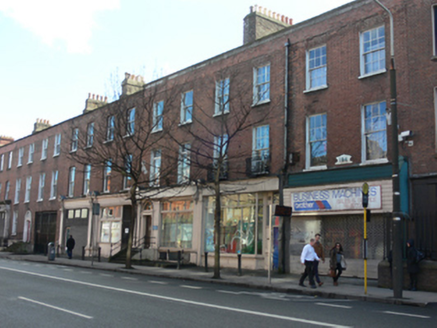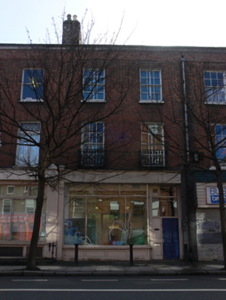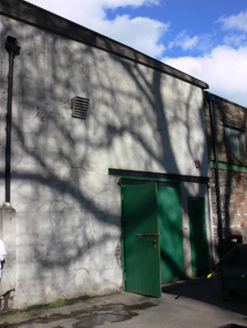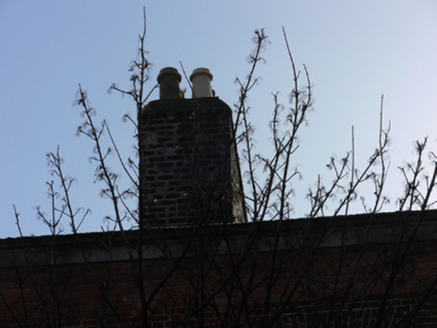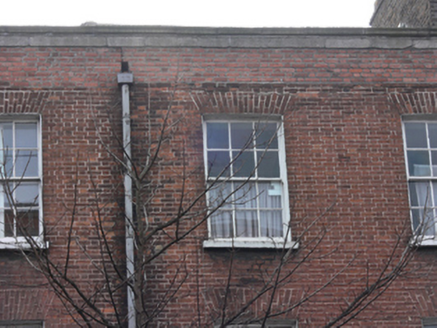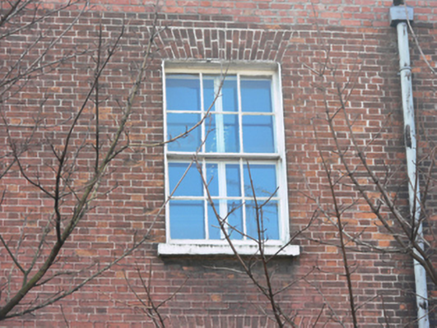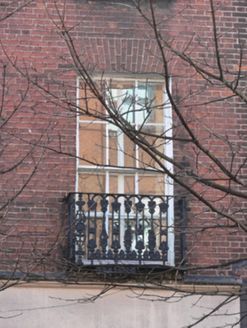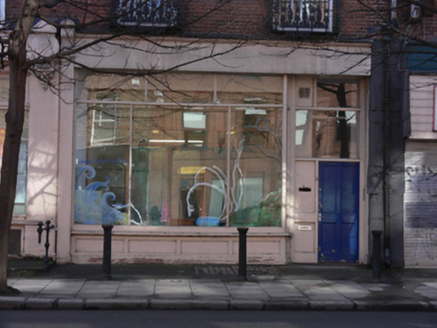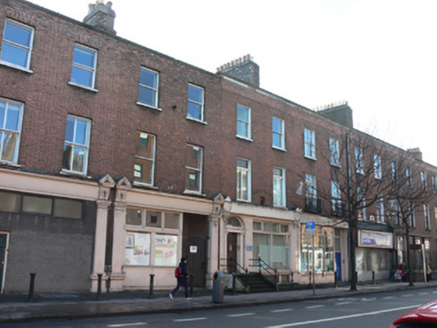Survey Data
Reg No
50020400
Rating
Regional
Categories of Special Interest
Architectural, Artistic, Social
Original Use
House
Historical Use
Shop/retail outlet
In Use As
Office
Date
1810 - 1830
Coordinates
316396, 234117
Date Recorded
11/03/2015
Date Updated
--/--/--
Description
Terraced two-bay three-storey over basement former house with attic accommodation, built c.1820, shopfront to front (north) elevation added 1911, and two-storey extension to rear (south) elevation c.1950. Now in use as part of college. Pitched slate roof concealed behind rebuilt red brick parapet with carved granite coping, red brick chimneystack having clay pots. Cut granite eaves course over red brick, laid in Flemish bond, to front, smooth render to extension to rear. Square-headed window openings with masonry sills and raised render reveals, having six-over-six pane timber sliding sash windows with cast-iron balconettes to first floor. Timber shopfront comprising pilasters, plain console, cornice and nameplate and square-headed window opening having timber framed display windows over panelled stall risers. Square-headed door opening with timber framed overlight and timber panelled door. Apparently retaining plaster cornices with Greek key and egg-and-dart mouldings to interior, with scrolled tread-ends to stairs and beaded panels to shutters. Fronting to south of Pearse Street, with steel-framed basement lights to footpath.
Appraisal
This building forms part of a group of similar buildings which maintain a consistent massing, parapet height and fenestration pattern. These buildings help make up the varied historic character of Pearse Street. In the 1860s it was occupied by Richard Levey, leader and director of music at the nearby Theatre Royal, and it was converted to commercial use in 1911. The retention of sash windows, iron balconettes, and interior joinery and plasterwork add to its historic character. Great Brunswick Street was laid out by the Wide Street Commissioners in 1812 after a long negotiation with Trinity College, whose grounds define the southern side of the street. While this building was erected in the subsequent decade, construction continued along the street for the next forty years. It was renamed in 1922 to commemorate William and Patrick Pearse, who had been executed for their part in the 1916 Rising, and whose family business was located at number 27.
